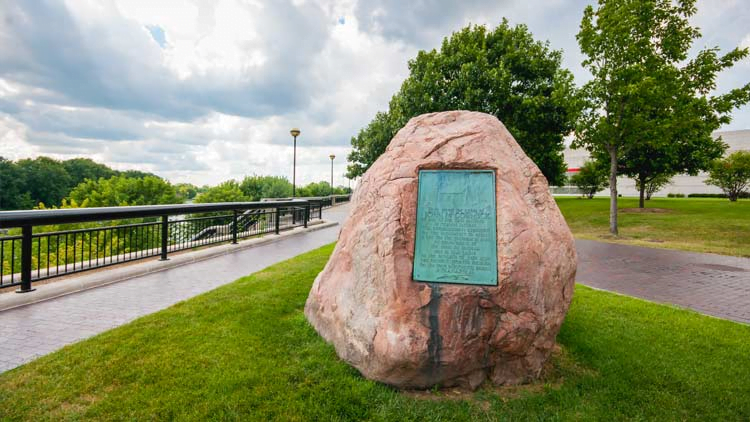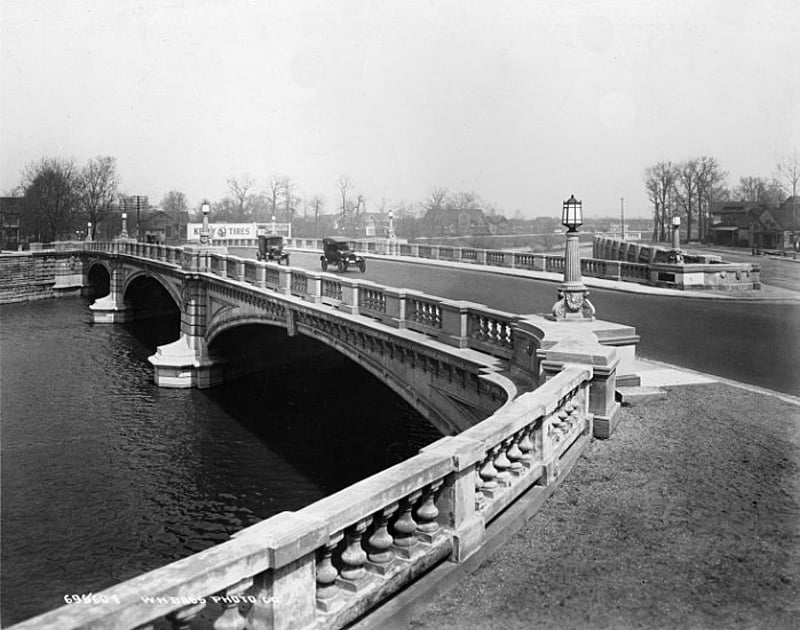River History
Storied past. Bright outlook.
The River’s History
The White River has its origins in the retreat of the most recent glaciers to impact central Indiana about 17,000 years ago. The terrain they left behind, combined with the geology beneath gave birth to the White River and all its tributaries. Four-thousand years later, the first humans arrived in the area, taking advantage of the rich habitat that had developed. A variety of native peoples inhabited the area over the millennia before the first European settlers arrived in the 1700s. By 1816, European and White American settlers led Indiana and Ohio to statehood, even though the native American Indians occupied much of the land in these territories. In central Indiana, the Miami people hunted in the area as settlers arrived, and as settlement grew welcomed the displaced Lenape tribe to the area. These early residents called the river Waapikaminki and then Wapahani, or white sands, for the limestone bedrock and sands over which the river flowed.

Agriculture thrived (and still does) along the river’s fertile banks, with settlers coming from far and wide to lay claim to land in growing towns like Carmel – where Quaker farmers found soils similar to their previous Pennsylvania homes.
The White River was originally a key factor in siting Indiana’s capital, Indianapolis, in the expectation that it would provide a major advantage in transportation. The shallow river proved difficult to navigate, however, and growth was slow as goods and people had to be moved in wagons over land. It was the city’s central location in the state and the Midwest, however, along pathways both east-west and north-south, that caused it to prosper. After a false start with a canal to address the river’s shallow, unreliable flow, railroads proved to provide better access to hungry markets in the East, St. Louis, and Chicago. By the 1870s, seven railroads converged in Indianapolis. Noblesville also benefited from an early railroad. Historic metal truss railroad bridges from the late nineteenth century still cross the river in both cities.
The White River and its tributaries provided drinking water and a source of power for a variety of mills. Hamilton County’s historic settlements of Riverwood and Clare originally started as milling communities that took advantage of the river’s power to capture energy and power mills. Later, the Holliday Hydroelectric Power Plant harnessed the river’s power. Noblesville was laid out as a grid of streets along the White River’s high banks at the center of Hamilton County soon after Indiana’s founding.
In the late nineteenth century, the growing number of factories in both Hamilton and Marion counties used the White River to dispose of their wastes. Pollution, however, became a recognized problem early in the twentieth century that persisted for more than a hundred years. During this time environmental racism related to pollution also played out on the river, including through segregated swimming beaches and combined sewer overflows. In 1999, an intentional industrial chemical discharge originating in Anderson decimated aquatic life for fifty-seven miles downstream, killing an estimated 4.6 million fish. The incident galvanized the environmental community and spurred redoubled action through federal and state policies and investment.
While the river provided important water and waste disposal functions, it wasn’t until nearly a century after Indianapolis’ founding that the river began to be recognized for its potential role in quality of life. A series of city plans in the early 20th century, most notably led by landscape architect George Kessler, knitted a growing park system together through waterways like the White River and tree-lined boulevards.

This work was accelerated by the Great Flood of 1913, the most significant flood of the White River in recorded history, during which intense rains coupled with still-thawing ground combined to create floods that devastated neighborhoods, factories, and transportation infrastructure. Many of the historic bridges present today date to the period of reconstruction after this flood. And while levees and flood walls were present prior to the flood, their construction expanded because of it, protecting vulnerable neighborhoods but also inhibiting their connections and access to the water.
Post-war growth favored automobile-oriented, suburban development patterns that largely ignored the river. Increasing regulations for development in flood plains helped to preserve some low-lying riverfront land that became public parks. Still, such development pressure led to the White River being named by advocacy organization American Rivers one of the 20 most threatened rivers in the nation in both 1996 and 1997, a time of rapid suburbanization in the watershed. Beginning in the 1980s public attention began to return to the river and its role in quality of life with the development of White River State Park in downtown Indy and new trail systems throughout the region. Decades later both Noblesville and Indianapolis are working to virtually eliminate overflows into the White River from their combined sewer systems. In Indianapolis, the Dig Indy tunnel network will reduce 95% of overflows into the White River by the time it fully opens in 2025.
While far more degraded than the pristine river first encountered centuries ago, the river today is healthier than it has been in generations thanks to regulations like the Clean Water Act, efforts like Dig Indy, and the work of advocacy and environmental organizations. Still, stormwater runoff from our lawns, rooftops, streets, and farm fields wash nutrients and pollution into the river, significantly impairing water quality. Climate change forecasts indicate the river will likely endure more extremes, with warmer, wetter winters and hotter, drier summers, as well as more extreme storms that bring more water faster to the river system.
